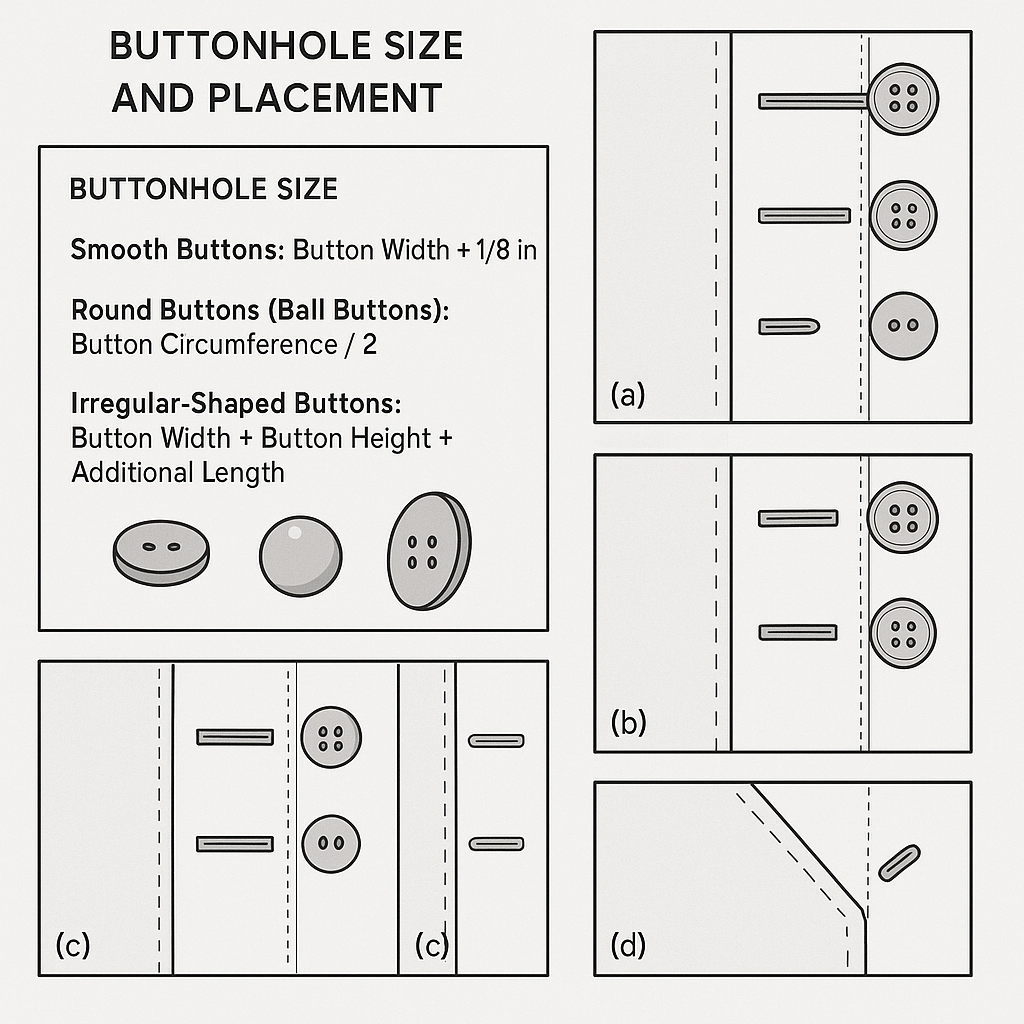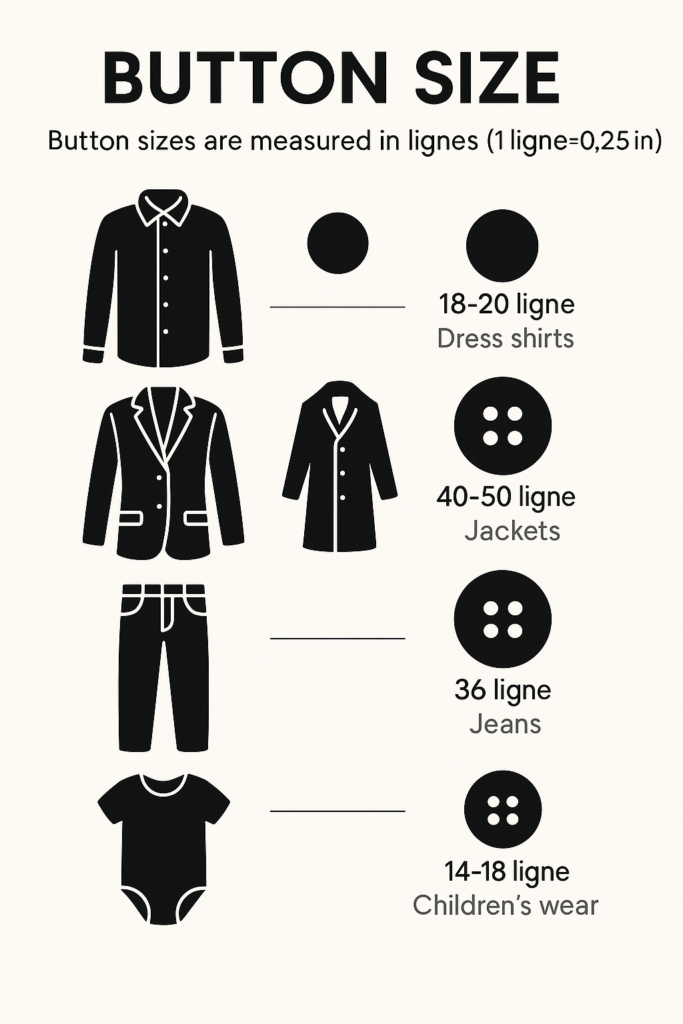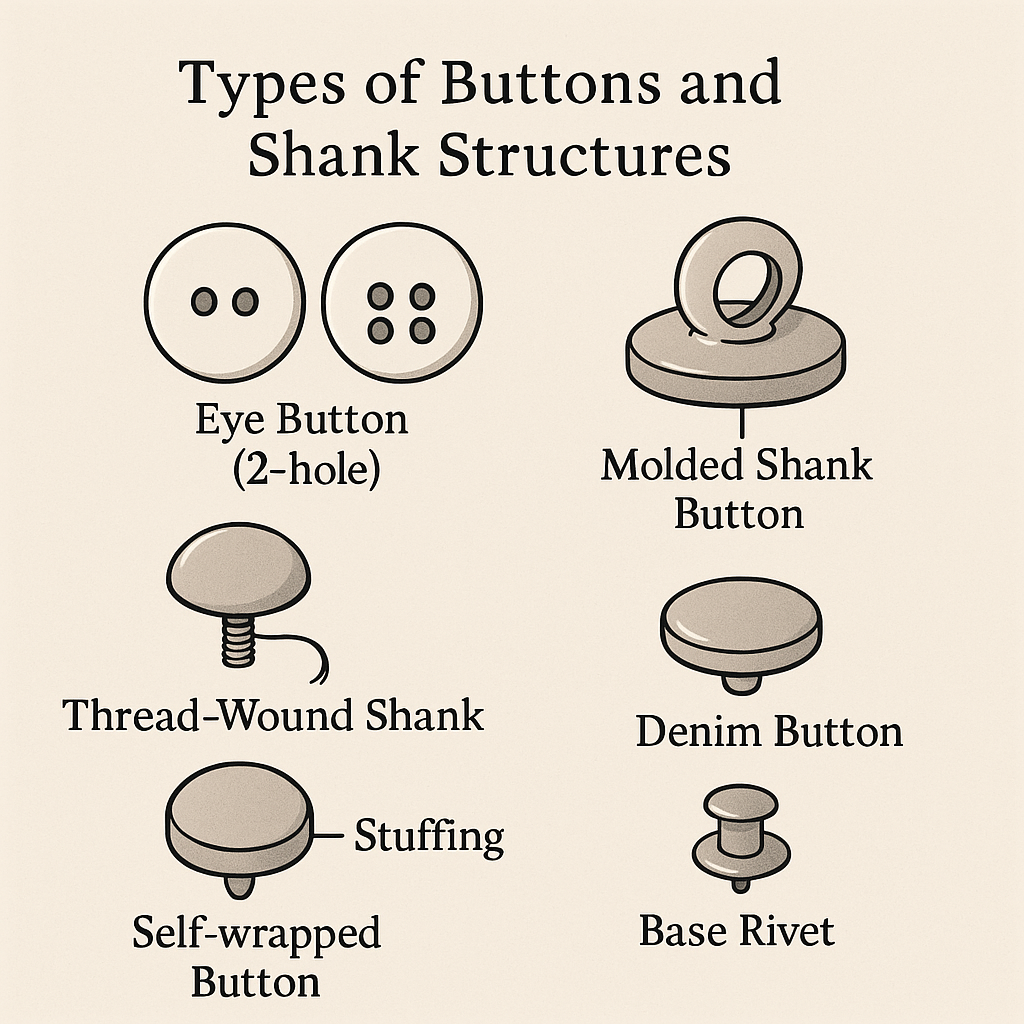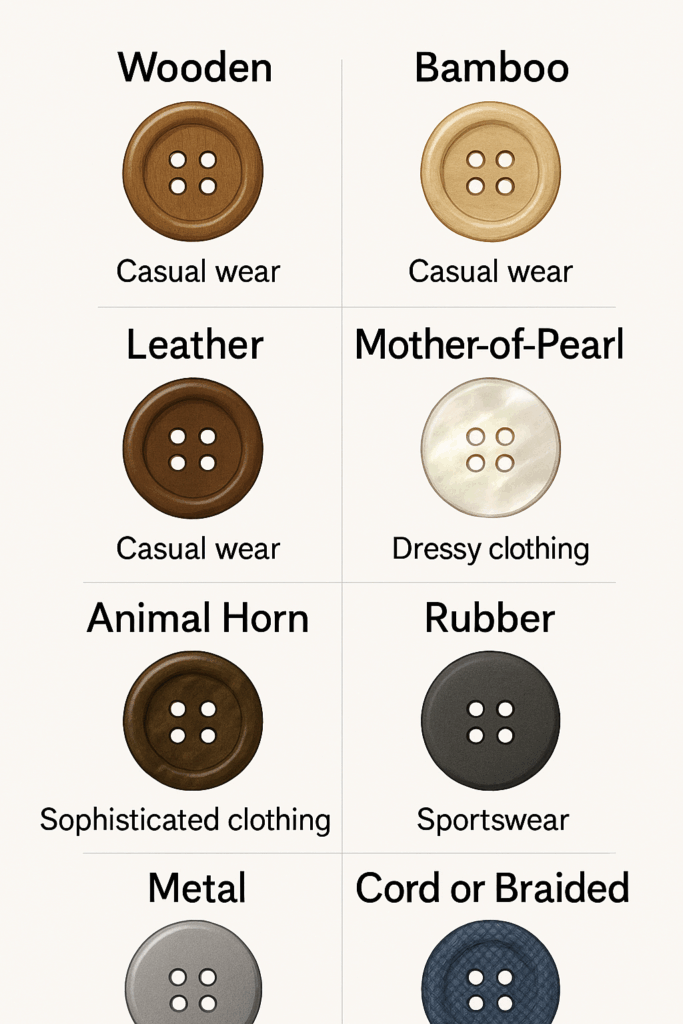📏 How to Determine Buttonhole Size and Placement in Garment Design
Precision in buttonhole sizing and placement is essential for both garment quality and customer satisfaction. If the buttonhole is too tight, it prevents fastening. If it’s too loose, the button slips. Both can lead to serious issues — especially in bulk production.
In this article, you’ll learn how to calculate the correct buttonhole size based on button type, and how to properly position buttonholes for secure, high-quality garments.
🔸 Why Buttonhole Size Matters
A properly sized buttonhole ensures:
- ✔️ Easy fastening
- ✔️ Button stays in place
- ❌ Avoids fraying or tearing
- ❌ Prevents garment distortion
👉 Even a small miscalculation can result in entire batches being rejected.
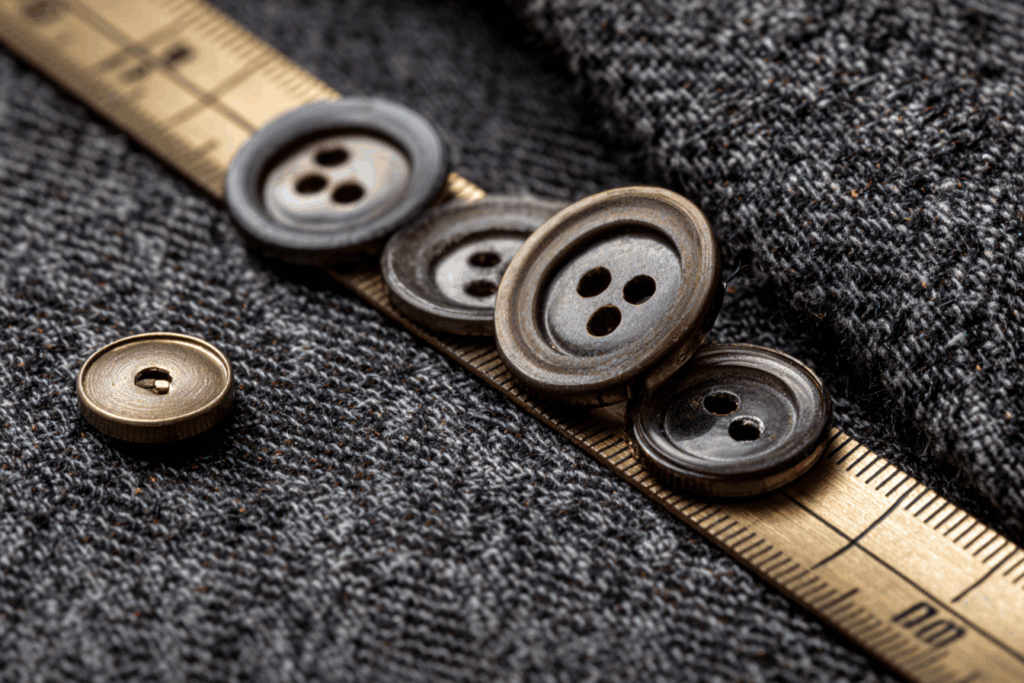

🔹 Buttonhole Size Formulas by Button Shape
| Button Shape | Recommended Formula |
|---|---|
| Flat/Smooth Button | Button width + 1/8 inch |
| Ball/Round Button | Button circumference ÷ 2 |
| Irregular Button | Button width + height + extra length (depends on shape) |
📌 Sample Calculations:
- 20mm smooth button → Buttonhole = 20mm + 3mm = 23mm
- Ball button (π × diameter = 62.8mm) → Buttonhole = 62.8 ÷ 2 = 31.4mm
- Irregular button = Base formula + add 2–5mm as needed
🧵 Fitting and Testing Tip
Each new button sample should be tested against the actual garment fabric. Consider:
- Thickness of fabric
- Stretchiness (knit vs. woven)
- Button shank or height
✅ Button flexibility during opening/closing must be tested in actual use conditions.
🔸 Buttonhole Positioning Rules
Buttonhole direction affects:
- Center alignment
- Garment tension distribution
- Fastening reliability
➤ Horizontal Buttonholes
- Most common for shirts, blouses, and coats
- The button rests at the end, not the center of the slit
- Buttonhole center should be shifted away from center front
- Prevents slipping open during wear
📌 Best for areas under horizontal tension (chest, waist).
➤ Vertical Buttonholes
- Ideal for lightweight fabrics and loose-fit designs
- The button lies in the middle of the slit
- Easier to align, but more prone to placket distortion
- Button spacing is typically slightly narrower
⚠️ Weak vertical buttonholes can tear under stress.
➤ Mixed Orientation
- Common in shirts or blouses
- Top button is horizontal, rest are vertical
- Top button holds placket in place, preventing shifting
📌 Use this combo to balance structure and ease of wear.
➤ Diagonal Buttonholes
- Adds a stylish or modern twist
- Suited for bias-cut garments or angular seams
- Needs proper interfacing to avoid stretching
📌 Also aligns with the direction of fabric grain or aesthetic angles.
🔍 Placement Guidelines Summary
| Orientation | Use Case | Button Position | Notes |
|---|---|---|---|
| Horizontal | Shirts, coats, jackets | Button at end of slit | Most secure, prevents slippage |
| Vertical | Dresses, blouses, light fabrics | Button at center of slit | Less secure, easier to tear |
| Mixed | Shirts, tunics | Top: horizontal, rest: vertical | Prevents gaping at collar |
| Diagonal | Bias-cut or fashion detailing | Direction of fabric grain | Must be stabilized with backing |
